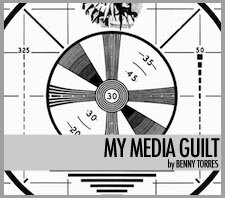Is That a Loyalty Program in Your Pocket? Probably Not.
Posted by John Durbin | June 25, 2012
Square recently announced they were getting into the loyalty game. They join a growing trend of third party loyalty program providers to accompany the ever-expanding programs that are offered by companies themselves totaling over two billion participants worldwide. Loyalty is only second to .
As more startups pop up to offer “loyalty” programs and larger, more traditional brands look to get into the “loyalty” game, there’s something we have to address right now. Many of these programs don’t generate loyalty.
They also don’t reward loyal customers either. If the idea was to reward loyalty, then they would track ALL the purchases they make, not just the ones of their product. If I drink 100 Diet Pepsis for every one Diet Coke you would never say I am loyal to Coke. But I can still pop points into My Coke Rewards and get some pretty nifty prizes.
This sentence from the Bay Area NBC affiliate illustrates a huge problem with what we consider loyalty. “Tuesday the Jack Dorsey operation introduced a loyalty reward program that allows merchants to reward loyal customers with rewards.”
No. The issue isn’t what a train wreck that sentence structure is. It’s that they think by giving someone something for buying their product, it’s a sign of loyalty.
They’re not rewarding loyalty. They’re rewarding usage.
Dan Buczaczer and I were talking about frequent flier programs recently. He has all of his miles at a certain airline (Airline A). It’s quite a healthy sum that he’s accumulated over the years. He makes sure every time he flies to get on this airline whether booking travel for business or vacation. Sounds like a pretty loyal customer, right? I asked him if Airline B would match his status and miles if he would switch from Airline A and never use them again. Without a beat of hesitation he said “Absolutely.”
Turns out, he doesn’t really like Airline A all that much. He speaks very poorly about them to people who ask and isn’t all that thrilled with their service or value. But that’s where his miles are. He’s beholden to this airline because they, like many others, are simply bribing people not to leave them.
Belly (and similar third parties) makes this distinction between loyalty and rewards even more complicated. The Dunkin Donuts in the Merchandise Mart food court employs Belly to implement/manage a “loyalty” program. But the Dunkin near my house doesn’t use it. Even if I eat Dunkin Donuts for every meal, I am only getting partial credit for my loyalty to the brand. And when I come in to work in the morning and wanna get my QSR breakfast on, I can choose the Dunkin Donuts with Belly Loyalty or the McDonald’s with Belly Loyalty that sits directly next to it. If I’m “loyal” to anyone in this case, it’s Belly.
Interestingly, a survey of marketing professionals came back with 60+% believing loyalty to be important piece of the marketing mix but only 13% believing they’re doing it well.
So why are we still struggling to figure this out?
Typically consumer loyalty is driven by customer service, product, value and familiarity; things we often consider out of our hands as marketers. It doesn’t have to be that way, though. There is a way to drive true product loyalty that comes from the marketing department.
A good place to start is by acknowledging the difference between loyalty and rewards. We too often call these programs “loyalty” when that is not even remotely close to what we’re doing. And no, as mentioned above, you are not rewarding loyal customers. All you’re doing with the typical rewards/loyalty program is shifting the value of purchase. It’s no different than if the brand paid the sales tax on behalf of the customer. It’s a nice gesture, but wont lead someone to use your product exclusively.
Making this distinction will also help you more clearly recognize what your objectives are. This will better inform every step of the process from taking inventory of assets to evaluating creative to measuring success. It will also help you answer an important question: am I ready to commit to a loyalty/rewards program given my objectives?
Sometimes, it might mean not starting a loyalty or rewards program at all and putting those resources behind an effort that will actually boost business. And that’s OK.
Just because it’s the new hotness doesn’t mean it’s the only .
One Response to “Is That a Loyalty Program in Your Pocket? Probably Not.”
Leave a Comment
RSS feed for comments on this post · TrackBack URI



Interesting write-up, and the airline example really makes sense when backing up your point. It’s probably why instead of a free ticket or upgrade, airlines give reward miles for bad experiences.